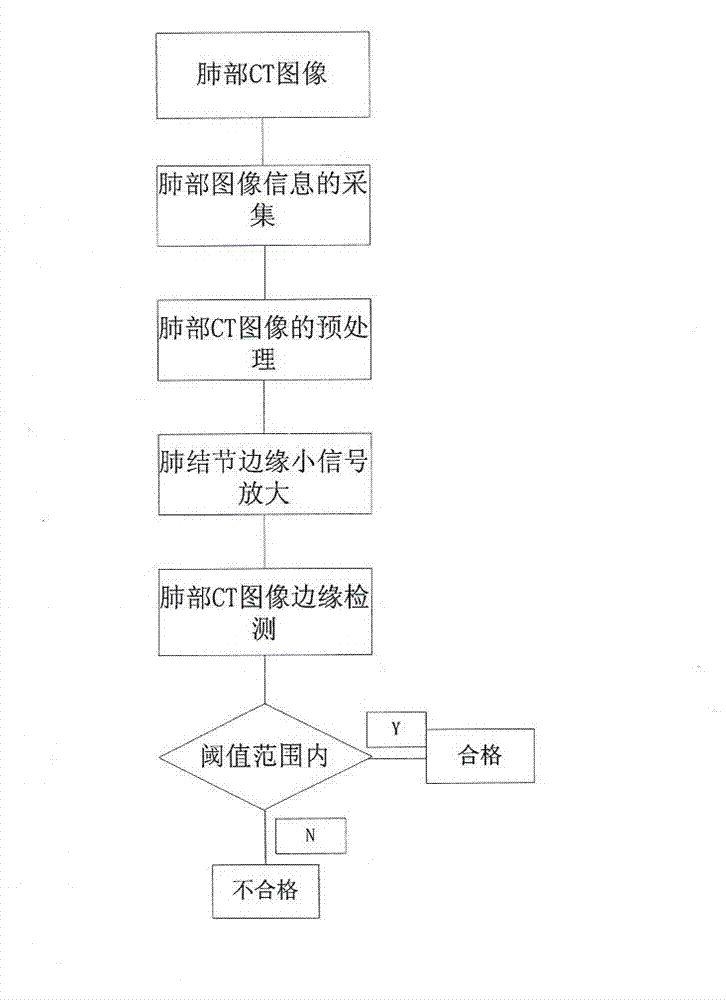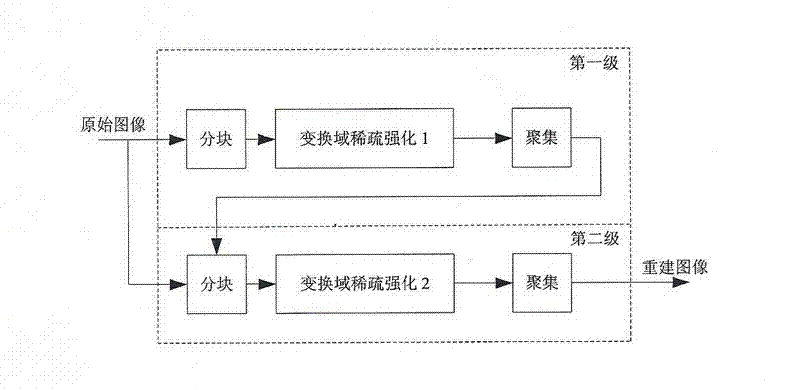Pulmonary nodule edge rebuilding and partitioning method based on computed tomography (CT) image
A technology for CT images and pulmonary nodules, which is applied in the field of image processing, can solve the problems that restrict the segmentation of pulmonary nodules, and achieve the effects of overcoming segmentation difficulties, getting rid of speckle noise, and strengthening edge detection
- Summary
- Abstract
- Description
- Claims
- Application Information
AI Technical Summary
Problems solved by technology
Method used
Image
Examples
Embodiment Construction
[0041] like figure 1 Shown, the steps of the present invention are as follows:
[0042] (1) Data collection: it can load and display multiple data formats at the same time; the user graphical interface consists of five parts: toolbar, graphical interface group, 3D display window, 3D and slice operation controller;
[0043] (2) Image preprocessing:
[0044] 1. Image Registration
[0045] Due to differences in image shooting time and external objective conditions, each image has its own scope of application and limitations. Image registration in multiple modes can give full play to the characteristics of the image itself and complement information. It is the basis of image fusion and prerequisites;
[0046] 2. Image Fusion
[0047] The images of the same target collected by multi-source channels are processed through image processing, and the information of each channel is extracted, and finally synthesized into the same image for observation or further processing;
[0048...
PUM
 Login to View More
Login to View More Abstract
Description
Claims
Application Information
 Login to View More
Login to View More - R&D
- Intellectual Property
- Life Sciences
- Materials
- Tech Scout
- Unparalleled Data Quality
- Higher Quality Content
- 60% Fewer Hallucinations
Browse by: Latest US Patents, China's latest patents, Technical Efficacy Thesaurus, Application Domain, Technology Topic, Popular Technical Reports.
© 2025 PatSnap. All rights reserved.Legal|Privacy policy|Modern Slavery Act Transparency Statement|Sitemap|About US| Contact US: help@patsnap.com


